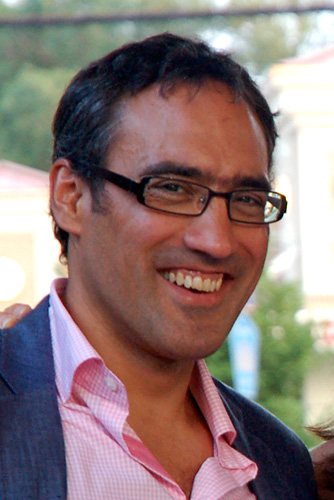BY JOE ROJAS-BURKE | OB BLOGGER
 Gov. John Kitzhaber scored nearly $2 billion in federal funding to overhaul the state Medicaid program for the poor and disabled. In return, the state promised a 2% reduction in the rate of growth in per capita Medicaid spending. I think Oregon’s going to have a relatively easy time hitting the budget targets — without stinting on quality. Here’s why:
Gov. John Kitzhaber scored nearly $2 billion in federal funding to overhaul the state Medicaid program for the poor and disabled. In return, the state promised a 2% reduction in the rate of growth in per capita Medicaid spending. I think Oregon’s going to have a relatively easy time hitting the budget targets — without stinting on quality. Here’s why:
BY JOE ROJAS-BURKE | OB BLOGGER

Journalists love to tell a dramatic story. And Oregon’s health care bargain with the Obama administration seems pretty suspenseful. Gov. John Kitzhaber scored nearly $2 billion in federal funding to overhaul the state Medicaid program for the poor and disabled. In return, the state promised a 2% reduction in the rate of growth in per capita Medicaid spending. Oregon faces some stiff financial penalties – up to $511 million – if it runs over budget or falls short on quality measures.
National media coverage has made a big deal about how hard this will be and how it’s a major test of the accountable care organizations that are one of the main cost- containment features of the federal Affordable Care Act. (The New England Journal of Medicine, for example, warned that “failure of the Oregon experiment would not only jeopardize health care for vulnerable Oregonians but also call into question the viability of central tenets of the ACA.”)
But I think Oregon’s going to have a relatively easy time hitting the budget targets — without stinting on quality. Here’s why:
1. Precedent. Oregon has to hold the per capita growth of Medicaid spending to 4.4% this year, and 3.4% in each of the next three years, which sounds pretty tight given that Oregon Medicaid spending rose 9.1% a year from 1991-2009. But on a per capita basis, the target is not wildly different from Medicaid cost containment in years past. From 1991-2009, annual “per enrollee” spending growth averaged 4.4% in Oregon, according to the federal Center for Medicare and Medicaid Services.
2. Momentum. To the surprise of many, national health spending growth abruptly began to slow down about five years ago. The recession from 2007-2009 played a role in holding back spending, but the slowdown has persisted. Some economists believe that the health care industry is undergoing fundamental changes — restraints on adoption of expensive new technology, increased patient cost sharing and higher efficiency among medical providers — that will make an enduring difference. Researchers at the Altarum Institute found evidence that the moderation in growth began before the recession and has continued ever since.
3. Low-hanging fruit. Unnecessary spending on avoidable hospital care is a problem across the board in health care, but it is especially rampant in the Medicaid program. Children in Oregon covered by Medicaid, for example, have double the rate of potentially avoidable emergency room visits as children covered by commercial insurance, according to data collected by the nonprofit Oregon Health Care Quality Corporation.
Adult Oregonians enrolled in Medicaid have 10 times the rate of potentially avoidable hospital admissions, which the Quality Corporation defines as cases in which appropriate outpatient care and early intervention could potentially prevent the need for hospitalization.
This is an obvious target for savings, and it’s being pursued avidly by the 16 new Coordinated Care Organizations across the state that have taken over the responsibility of delivering health services to more than 90% of Medicaid members in Oregon since August 2012.
4. Provider confidence. The Coordinated Care Organizations are nominally new entities, but the people running them have years of experience as Medicaid managed care contractors. The CCO leaders I’ve talked with seem pretty confident they can keep spending within the budget. Here’s Dean Andretta, interim executive director of Willamette Valley Community Health, a CCO in Salem:
“When we look at, for our plan, what’s budgeted for the next couple of years — a 3.4% increase in capitation rates if we hit our quality metrics — we are actually happy about that…I’m not going to say that we’re done. We have a ton of work ahead of us. It’s a tough population. It’s a tricky benefit plan. The key really is an engaged provider community. I have not seen in 15 plus years here a more motivated primary care provider group. All of them are really engaged.”
So I don’t think the budget targets are going to be the most important test of Oregon’s five-year Medicaid demonstration project. The ultimate aim is to transform the entire health care delivery system. Medicaid covers only about 15% of Oregon’s population. It’s not clear if that’s going to be enough of a share to catalyze changes in the commercial market, where something like 55% of Oregonians get coverage.
As it stands, hospitals and physicians earn most of their income from fee-for-service payment, a reimbursement model that has pervasively driven up costs by rewarding providers for doing more procedures, whether or not they are needed and mostly without regard to results, such as keeping people with chronic conditions healthy. Oregon’s CCOs, like the accountable care organizations piloted by Medicare, are developing alternative payment models that will reward quality and health outcomes, rather than the quantity of procedures cranked out.
So if a health system adopts more efficient processes that, for instance, prevent unnecessary hospital admissions, it could end up losing money if it applies those processes to fee-for-service patients. In the fee-for service world, each unnecessary hospital admission, specialty procedure or imaging test that is avoided counts as lost revenue for the hospital and doctors.
One of the top performing health systems in Medicare’s Pioneer accountable care pilot program highlights the problem. Bellin ThedaCare Health Partners in Wisconsin made efficiency gains that resulted in a financial penalty because 82% of its patients remain covered by fee-for-service insurance. The health system saw its revenues fall from a projected 3% increase for 2013 to an actual 0.7% decrease during the first 6 months of the year, according to a report this week in the Journal of the American Medical Association. The authors conclude:
“Unless all payers quickly move to value-based payment systems or give insurers incentives to preferentially use health care organizations that provide greater value to patients, more organizations (especially those unable to shift costs to other payers) will discontinue participation in both of Medicare’s ACO programs and other related arrangements. That is why (in most markets) commercial insurers, self-funded employers, and state administrators of Medicaid must join with Medicare to discuss health system incentives that are based on value for patients, not just shared savings.”
In Oregon, commercial health plans are showing interest. Regence BlueCross BlueShield, one of the state’s largest health insurance companies, in July announced a coordinated care agreement with two hospital systems: Adventist Health and Tuality Healthcare. The parties say they are adopting a payment model that shifts from traditional fee-for-service arrangements to an outcome-based model emphasizing quality and total cost of care.
Whether these budding accountable care plans will flourish in the commercial arena remains to be seen. They will have to outcompete traditional health plans to attract the business of employers and individual consumers.
 Before wandering into journalism, Portland writer Joe Rojas-Burke studied biology at Columbia University and worked as a cell biology researcher at the Rockefeller University in New York City. He was a Knight Science Journalism Fellow at the Massachusetts Institute of Technology during the 2012-13 academic year.
Before wandering into journalism, Portland writer Joe Rojas-Burke studied biology at Columbia University and worked as a cell biology researcher at the Rockefeller University in New York City. He was a Knight Science Journalism Fellow at the Massachusetts Institute of Technology during the 2012-13 academic year.



